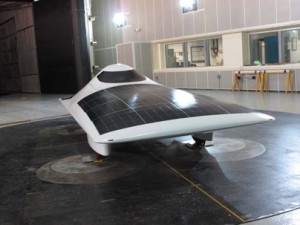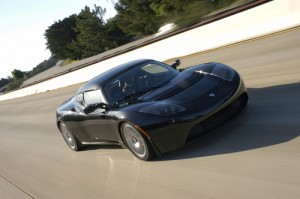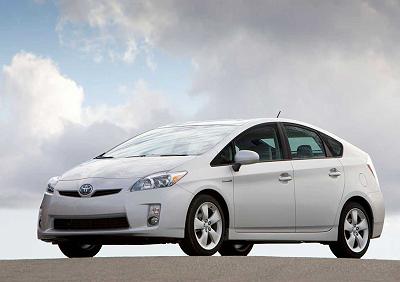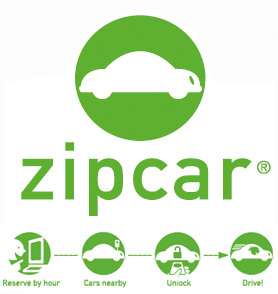A new ocean is emerging on planet Earth. This ocean was once composed mainly of solid ice, sometimes hundreds of meters thick. During this past summer however, the first known commercial shipment from Asia to Europe took place — via the Arctic (NYTimes). The German cargo vessles Beluga Foresight and Beluga Fraternity are two examples of such a new-found commercial shipping trend. The cargo carriers originally left from South Korea and are departing on their last leg from Siberia. Such a passage has been the dream of many a mariner, sea-voyager and commerical tradesman, yet the gripping reality of vast open Arctic waters is not the dream of those concerned about climate change. For about a month each summer, Arctic ice recedes to a degree that now allows cargo ships to pass through with ease, unlike in years before where large ice-breaking machinery had to be used. Scientists are concerned that this trend will lead to an economic thirst for greater speed in commerce thus fueling the world’s appetite for rapid growth and development. While growth and development aren’t necessarily evil entities unto themselves, the quantity of demand as developing nations develop and as global population soars is what puts the planet, and the long-term health of the species living on it, in serious jeopardy.
Category Archives: Transportation
Foot Traffic in Wakefield saves energy, burns calories
 A new initiative in Wakefield, MA sees students from Dolbeare Elementary School going to their regular school bus stop–to wait for the rest of their classmates to walk past on their way to school. They get on the ‘walking bus’ and proceed to the next ‘stop’ to pick up some new students.
A new initiative in Wakefield, MA sees students from Dolbeare Elementary School going to their regular school bus stop–to wait for the rest of their classmates to walk past on their way to school. They get on the ‘walking bus’ and proceed to the next ‘stop’ to pick up some new students.
At the end of their journey, they arrive at school having already done something to address two of society’s most pressing problems–childhood obesity and the release of greenhouse gases into our atmosphere.
Green (& Brown) Art

The DeCordova Museum & Sculpture Park in Lincoln, home to the lovely “Pine Sharks” pictured at left, is featuring an exhibit of photography on the effects of the built environment dubbed Power Structures.
This is also another Cambridge Open Studios weekend
Available Renewable Energy Tax Credits & Rebates
Here’s a list of the latest Renewable Energy Tax Incentives now available to residents and businesses in Massachusetts. The highlight being if you can somehow generate hydro-electric power from that attractive water feature in your backyard and hook it up to the grid, you’re good for a $50,000 tax credit from the Commonwealth.

On the other hand, if you’re interested in available Tax Credits for Qualified Hybrid Vehicles.
MIT Introduces new Solar Car

This car will be competing in October in the World Solar Challenge race across Australia. About a dozen team members are expected to go to Australia for the race, although only four will drive the solar car in the competition. By the way, the car’s name is Eleanor and when the sun shines, it will do 55 mph all day long.
Arbitrage on Electric Car Batteries

A couple of weeks ago Warm Home Cool Planet featured a story on the 2010 Chevy Volt–the car that will save GM–and the first mass market example of transport technology that might save us all in the end. But will the public buy it.
This article about the Tesla (the all electric roadster favored by environmentally-conscious celebrities such a George Clooney) demonstrates there is a market for these cars, as long as they are appropriately targeted to customers.
The most interesting part of the article examines the company’s financial arrangements with customers to replace the car’s battery, which they estimate has a lifetime of approximately 7 years or 100,000 miles. As you can imagine, you don’t simply undo the cables and hand swap them like a vehicle powered by an internal-combustion engine. Currently, Tesla imagines the cost of replacement at $32,000. But they will take an upfront payment of $12,000 when you plunk down $105,000 for the Roadster.
If you can afford 100 grand for a car, the $12,000 upfront rather than sounds like a pretty good risk, particularly in this investment climate. It brings up a interesting point about the marketability of electric and hybrid cars. If the battery on this these cars has a finite lifespan, owners already paying a premium to cut down their CO2 emissions will be hit with a substantial repair bill after owning the car for a number of years. This will affect the the resale of these vehicles, making them a less attractive new car purchases.
By taking the money upfront Tesla is taking a gamble too. They are betting that by the time these batterries need to be replaced, technology will them to install a new power source for their car at closer to the $12,000 they took from each new car buyer.
GM has not made any definitive statements about the lifespan or replacement cost of the electric batteries in Volt. But even $12,000 is almost half the cost at which they plan to sell the car. Warm Home Cool Planet’s advice to all planning on buying a Volt… bank that rebate check and compound that interest–you may need it.
Stay tuned for more on this subject.
Zipcar-wheels when you want them
Occasionally we like to give a shout out to our neighbors in Cambridge doing the right thing by the community and the environment. Zipcar, who rent cars by the hour or day, definitely fits into that category. Here’s where Zipcar explains why using one of their vehicles for your transportation around town is much better for the environment than owning your own car–you’ll probably find it’s cheaper too. If you’re not into the whole reading thing, the graphic below explains how the Zipcar works. The only thing to add is that Zipcar does expect the car back at some point…
Unlike Hertz, Avis and all the other car rental companies, Zipcar’s policy is to locate cars in the neighborhoods where their customers live, which cuts down on transportation costs to your Zipcar.
Find out if there’s a Zipcar near you.
New Prius on the Horizon

2010 Toyota Prius
Not that we’re flacks for the auto industry, but when we heard they were rolling out a new Prius at this year’s Detroit Auto Show, the car fans here at Warm Home Cool Planet got all excited. After all, here’s the car that pretty much made hybrid a household word.
When we heard words like ‘mainstream styling’ we started to worry that the Prius’ wonderfully quirky styling had become a victim of success. Have no fear, though, as you can see from the photo above the distinctive ‘slice of pie’ profile is still there. With just a little Camry styling around the lights.
Energy Prices Take a Breather
The drop in energy prices-at the pump and in the home-we saw in the last quarter of 2008 will likely stay with us through 2009 according to the US Department of Energy. Add that to the shaky economic outlook and that means people will be less likely to undertake home repairs and improvements for the next 18 months.
Builders and handymen will be looking for work-and available. So there’s never been a better time to plan an energy efficient makeover for your house. Get it done before oil and gas prices start to rise in 2010.
Winter Driving Tips: Safe and Efficient
As I write this post, the Midwest and northern states are in the grip of a deep freeze. Temperatures are extremely low, and when wind chill is added in, it’s barely possible to set foot outside.
But if you are like me, you still need to get to work. For most of the country, that means driving—at least a little, if not an hour-plus commute each way. So why not make your vehicle efficient? We’ve been advising you on ways to make the home more energy smart, so let’s talk about your car for a moment.
One of the best ways to be energy smart with your car is also one of the wisest: drive sensibly. Aggressive driving wastes gas. Jackrabbit starts, sudden stops and herky-jerky speeding up and slowing down can lower your mileage as much as 33 percent. If you like paying a third more per gallon, by all means… but it’s safer for you and everyone around you to be a careful, sensible driver. Now you have one more reason!
Second: Observe the speed limit. Gas mileage decreases once you pass 60 mph; if you’re going 100+ on a back road, you’re probably getting as good gas mileage as an Army tank. Every five miles per hour over sixty is like paying a quarter per gallon more for gas (according to fueleconomy.gov). Slowing down in cold weather is also much safer. You don’t want to find yourself crossing black ice at high speeds.
One tip we often give—reduce the weight in your car—is not one I’d recommend during the winter. Having some extra weight in the trunk of your car keeps the rear tires (even now, the ones that most often propel the car) firmly on the road. You might lose a bit in terms of gas mileage (something like two or three percent for every 100 lbs.), but the safety trade off in weather like this can be worth it.
Okay, going completely off the efficiency map for a moment, remember to keep emergency supplies in your car. You should have:
• a jack and a spare tire (always!)
• a blanket (or two)
• road flares
• a gallon or two of water
• maybe even a spare coat or two.
A car cell phone charger is also a very good idea, as is extra anti-freeze or even a small bag of rock salt (to de-ice the road near your car). Having these things on hand can mean survival, if your car goes off the road in blizzard conditions. As the Boy Scouts say: Be Prepared.
Drive safe, keep an eye on the weather, and see you back here soon!
Drew Bittner is a former Presidential Management Intern (PMI) and the Web content manager for EERE’s corporate Web pages.


